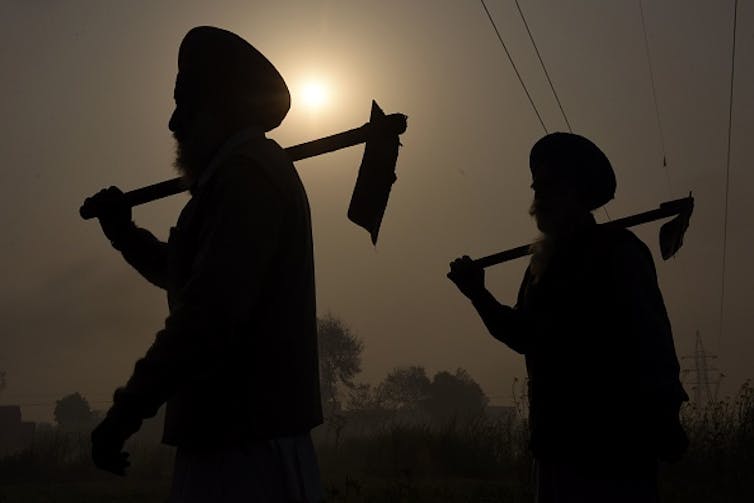
Lungile Ntsalaze, University of Johannesburg
Undoubtedly, financial technology (fintech) is driving greater financial inclusion. Innovations are giving people more access to financial services through mobile and computing services, the internet, and payment cards. One of these services is microcredit: small loans for individuals and informal businesses.
But a closer look at the microcredit channel of inclusion shows an emerging form of dispossession of the poor. Examples include the catastrophic collapse of microfinance in Andhra Pradesh, India, in 2010. Microfinance institutions were involved in reckless lending in the chase for abnormal profits. Over-indebted clients could no longer service their debt. Some even took their own lives due to debt recovery-related harassment and the shame of being unable to service debt in group-lending situations.
In an attempt to restore confidence, global development agencies quietly rebranded microfinance. But the microcredit element of financial inclusion still presents problems. It’s even worse now that there is a shift in the funding patterns of microfinance institutions from donors to private capital driven by profit maximisation objectives.
Economists Milford Bateman and Fernando Teixeira suggest that the fintech drive in the name of financial inclusion mirrors colonial-style extractivism to maximise profits.
Under this scenario, fintechs brutally extract profits from the financial transactions of the poor. The authors warn against secondary exploitation.
In 2004, Indian-American entrepreneur and author Coimbatore Prahalad published a book that proposed that the poor hold a “fortune at the bottom of the pyramid”. The book was published amid growing efforts to tap into this so-called fortune for profit in various sectors. Financial services was one of them.
Financial technology firms began to emerge with innovations intended to reduce information asymmetries and transaction costs in providing financial services. This included credit. But there’s growing evidence that when left unchecked, market-led financial innovations are more likely to be dominated by profit maximisation objectives at the expense of the very vulnerable.
Examples of bad practice
Safaricom and Cash Paymaster Services (CPS) are examples of market-oriented initiatives.
In Kenya, Safaricom’s M-Pesa innovation, launched in partnership with the UK’s Department for International Development, improved financial inclusion. It also delivered substantial profits for its private investors and significant indebtedness for its target market.
CPS, a subsidiary whose parent company, Net1 Technologies (Net1), received an equity investment from the World Bank’s IFC for broader expansion into Africa, was contracted to disburse social grants in South Africa. The company abused its monopoly position over the personal data of beneficiaries.
The Net1 group made more money from cross-selling financial products, such as microcredit by sister companies, than the CPS contract.
Grant beneficiaries ended up no longer able to meet their households’ immediate needs on a reduced grant and were forced to seek additional debt, likely from unscrupulous lenders, to cover shortages.
The consequences were deepened levels of poverty and the perpetual over-indebtedness of those supposedly getting relief through government grants.
Similarly, in India, the Aadhaar system gathers detailed profiles of beneficiaries. These are monetised, and through the process huge profits are made.
Private companies have access to the personal data of government grant recipients. This is used to sell financial products to the grant recipients. Grants get used as collateral for credit, with investors bearing no risk for their commercial enterprise because loan repayments are deducted before grant payments are made to beneficiaries.
There are alternatives. In Brazil, a state-led fintech approach is followed. This works through Banco Mumbuca, a community bank. A community-restricted currency that is pegged at 1:1 to the official currency is created and used to disburse social security payments.
In addition to taxes, the bank is sustained by revenue earned on every business transaction and from the conversion of community currency to official currency. Consequently, microloans made to the community for social development programmes and entrepreneurship are at zero or very low-interest rates. This is much lower than in the market-led approaches.
Takeaways
Fintechs are an essential way to address market failures of traditional banking. But market-led innovations exploit the poor. These practices are made possible when governments fail to develop the capacity to deliver social services and outsource them to private entities.
Data is now seen as “the new oil”. It thus makes sense for the state to guard it jealously. Developing countries should protect the interests of the poor by carefully scrutinising market-led financial inclusion efforts. They should develop internal capacity to safeguard citizens’ data, and explore the viability of fintech models.![]()
Lungile Ntsalaze, Executive Dean Designate: College of Business & Economics, University of Johannesburg
This article is republished from The Conversation under a Creative Commons license. Read the original article.

